When it comes to roofing materials, asphalt shingles are a popular choice for many homeowners. They are a cost-effective and durable solution that comes in a variety of styles and colors to suit any aesthetic.
However, even the most robust roof will eventually need some care. Understanding the signs you need a shingle roof repair is crucial. Timely and professional shingle roof repair ensures your home remains protected and helps to avoid more extensive and costly damage down the line. A reliable asphalt shingle repair is an investment in your home’s long-term functionality and curb appeal.
Key Takeaways
- Spotting Damage: Regular checks are crucial. Learn to spot signs of shingle damage like cracking, curling, or missing tabs, as well as more subtle issues such as granule loss and water stains on your ceilings. These can be early indicators of a larger problem.
- DIY vs. Pro: For minor fixes, DIY is an option. However, for more extensive damage, a professionals roofers can provide a thorough inspection, ensure the repair is done correctly and safely, and offer a warranty on their work.
- Cost: The cost of shingle roof repair is customized to each specific job. It is influenced by key factors like the extent and location of the damage, the type of shingles required for the fix, and the complexity of the labor.
- Protection: Proactive maintenance is the best long-term strategy. The guide emphasizes the importance of scheduling regular roof inspections, ensuring proper attic ventilation, and trimming overhanging branches to prevent future damage.
Our Introduction to Roof Repair
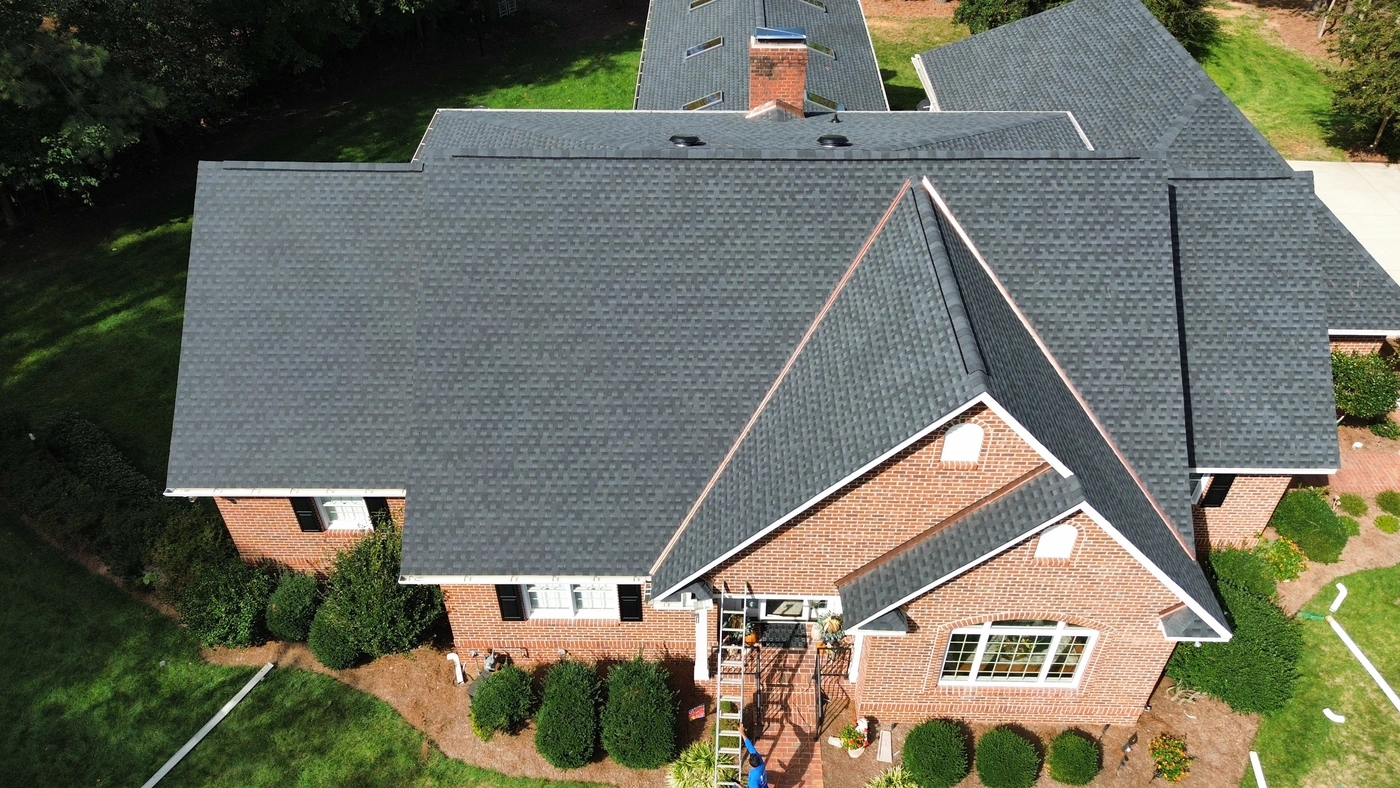
Shingle roof repair is a vital part of home maintenance, especially for those with an asphalt shingle roof. Your roof shingles are the first line of defense against the elements, and even a few damaged shingles can compromise the entire shingle roof. Ignoring minor issues can quickly lead to costly repairs, as water and weather can cause further damage if left unchecked.
Understanding the basics of shingle roof repair, including its cost and when to call a roofing contractor, empowers homeowners to make smart decisions about their roof. Regular roof repairs and maintenance not only extend the life of your roof but also help prevent major problems, keeping your home in tip top shape for years to come.
Signs of Asphalt Shingle Damage
Before you can address shingle roof repair, it’s essential to recognize the signs of damage. Regular inspections of your roof will help you identify issues early on, potentially saving you money in the long run. Here are some common signs of asphalt shingle damage to watch out for:
- Missing Shingles: Missing shingles are an obvious indicator of damage. High winds, storms, or improper installation can cause shingles to lift or completely detach from your roof.
- Curling or Buckling Shingles: Shingles that curl up at the edges or buckle in the middle are a sign of weather-related damage or poor ventilation in your attic. This can lead to leaks and further deterioration. Trapped moisture and UV rays are common causes of shingle curling and cracking.
- Cracked or Broken Shingles: Cracks or breaks in shingles can be caused by hail, falling tree branches, or simply the natural aging process. These damaged shingles can allow water to penetrate your roof.
- Granule Loss: Asphalt shingles have protective granules on their surface. If you notice a buildup of granules in your gutters or downspouts, it could point to granule loss issues that weaken your shingles’ protective layer. It’s a sign that your shingles are deteriorating and may need repair or replacement.
- Leaks and Water Stains: Interior water stains or leaks in your attic are obvious signs that your roof is compromised. These need to be addressed promptly to prevent further damage to your home’s structure.
When doing the inspection for addressing shingle roof repair, pay special attention to areas prone to leaks and damage, such as roof valleys, around chimneys, and near skylights.
Identifying Damaged Areas

Spotting damaged areas on your roof early can save you from extensive and costly repairs down the line. Start by looking for obvious signs like damaged shingles—these might be missing, cracked, curled, or showing signs of missing granules. Don’t forget to check the roof decking and roof flashing for any signs of wear or water intrusion.
A thorough inspection, both from the ground and up close if it’s safe, can help you identify issues early and prevent further damage. Regular visual inspections are key, but for a more comprehensive assessment, consider hiring a roofing contractor. Their expertise ensures that no problem goes unnoticed, helping you address repairs before they escalate. Beyond visible shingle issues, it’s important to check for roof sheathing problems that may affect your roof’s structural integrity.
Shingle Roof Repair Prep
Before you begin any shinge roof repair, proper preparation is essential for a safe and effective outcome. Start by clearing the roof of any debris and protecting the surrounding areas to avoid accidental damage during the repair process.
Remove any broken or missing shingles to expose the area that needs attention. It’s also important to consider the repair costs involved, which can include materials, labor, and any necessary permits. Consulting with a roofing contractor can provide you with a detailed estimate of repair costs and help you understand the scope of the work.
Factors such as the extent of the damage, the type of shingles used, and the accessibility of your roof can all influence the total cost of repairs. Taking these steps ensures your shingle roof repair goes smoothly and helps you avoid unexpected expenses.
How to Repair Asphalt Shingle Damage: DIY Version
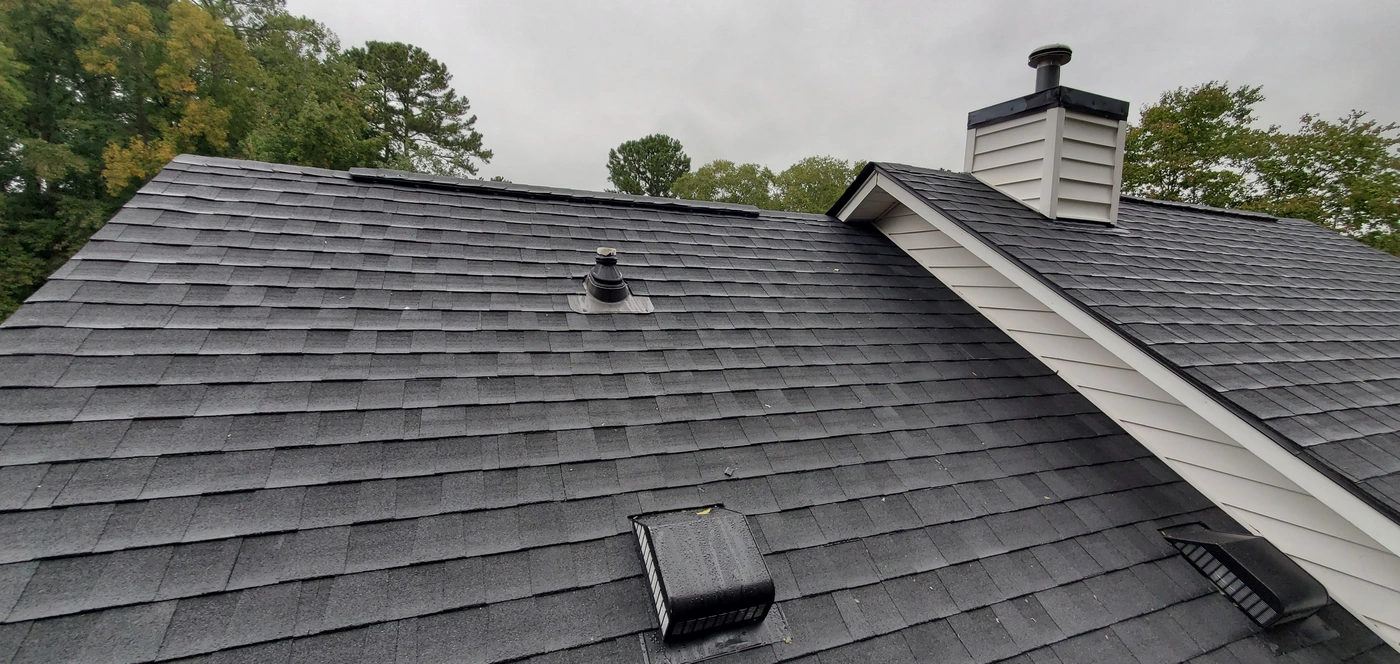
Once you’ve identified signs of damage, it’s time to address the issue. Repairing asphalt shingle damage can be done through DIY methods or by hiring a professional. A DIY shingle roof repair is often suitable for minor issues like curling or lightly damaged shingles, but the appropriate repair type will depend on the extent and nature of the damage. Here’s a step-by-step guide for both options:
1. Gather Supplies
- Replacement shingles
- Roofing nails
- Roofing cement
- Pry bar
- Hammer
- Utility knife
- Safety gear (gloves, safety glasses)
2. Remove Damaged Shingles
Carefully lift the shingles above the damaged ones using a pry bar. Remove the damaged shingles by loosening the roofing nails.
3. Replace Shingles
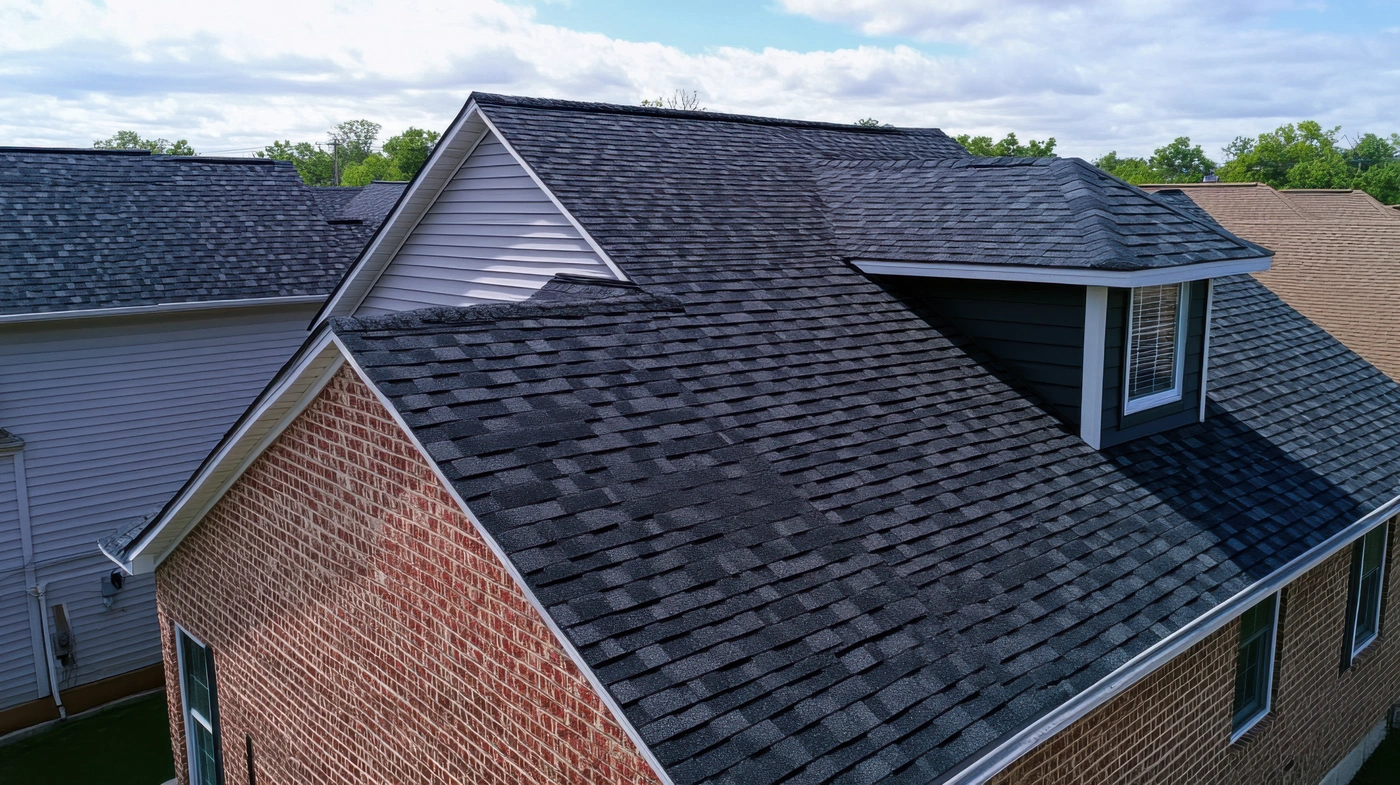
Slide the new shingle into place, ensuring the new shingles are properly aligned and secured with the existing ones. Secure the new shingle with roofing nails. Apply roofing cement under the overlapping shingles to seal them together. Using a quality roofing sealant at this stage can help ensure the new shingles are watertight and durable.
4. Check the Surrounding Shingles
Ensure that the surrounding shingles are in good condition and properly secured.
5. Clean Up
Remove any debris or loose granules from the roof and gutters.
How To Repair Asphalt Shingles: Professional Version
Wondering how the pros handle shingle roof repair? Here’s a brief overview. Professional shingle repairs can address everything from minor fixes to major repair and extensive repairs, including situations where a full replacement or roof replacement may be necessary.
1. Find a Reputable Roofing Contractor
Research and hire a licensed and insured roofing professional with a good reputation.
2. Inspection and Assessment
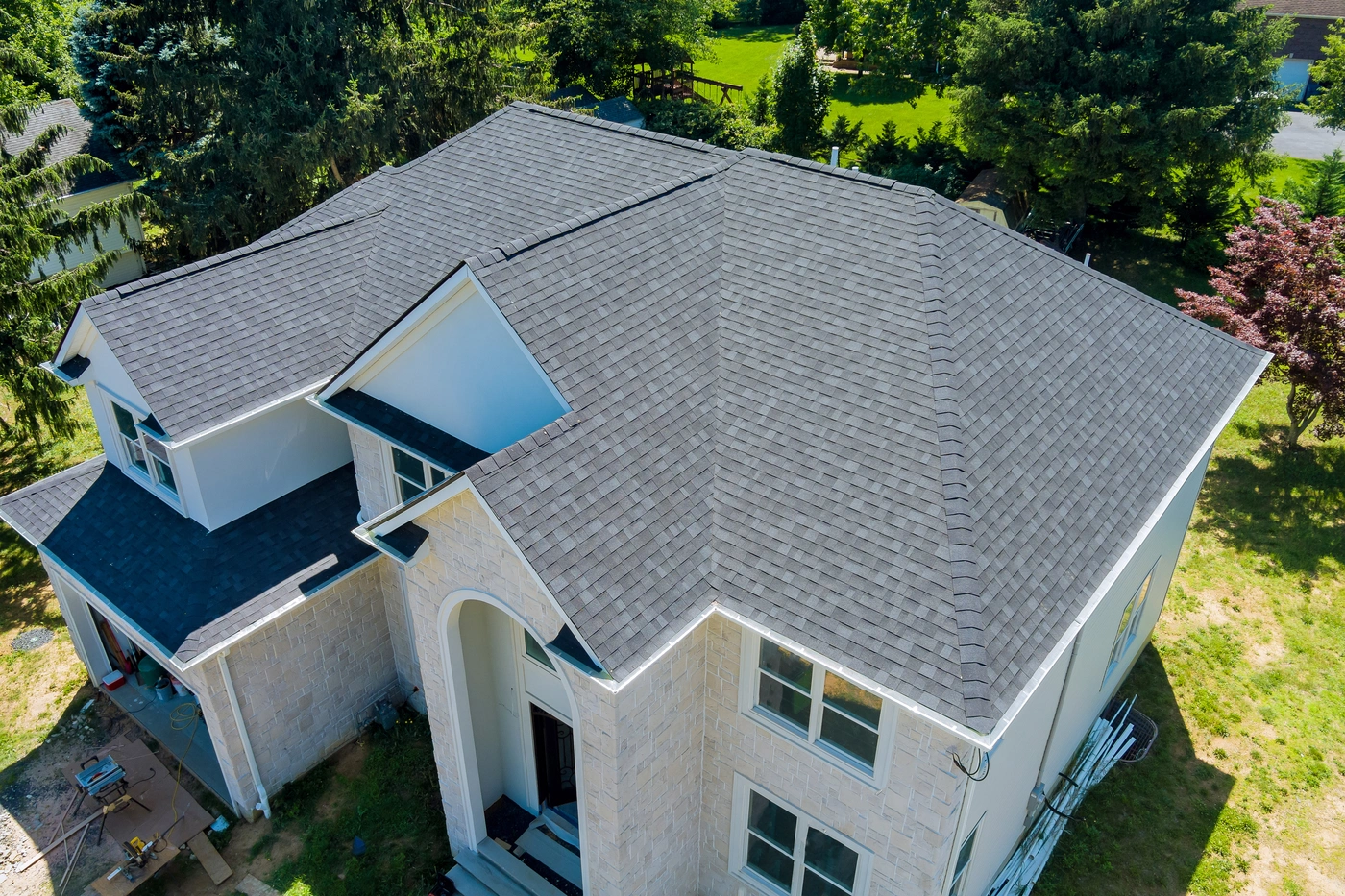
The contractor will conduct a thorough inspection to identify all damaged shingles and assess the overall condition of your roof. The contractor will also check for any signs of structural damage that may require more extensive repairs.
3. Repair or Replacement
Based on their assessment, the contractor will recommend whether you need a shingle roof repair or an extended solution to replace the damaged shingles. Sometimes, only a few shingles require fixing, while in other cases, more extensive repairs may be necessary.
4. Quality Repairs
Professionals have the expertise and tools to ensure a high-quality repair that meets industry standards.
5. Warranty
Many professional repairs come with warranties, providing peace of mind for the homeowner. Roof warranties may cover material defects but often exclude labor costs, so it’s important to review the details.
DIY vs. Professional Repairs: Pros and Cons
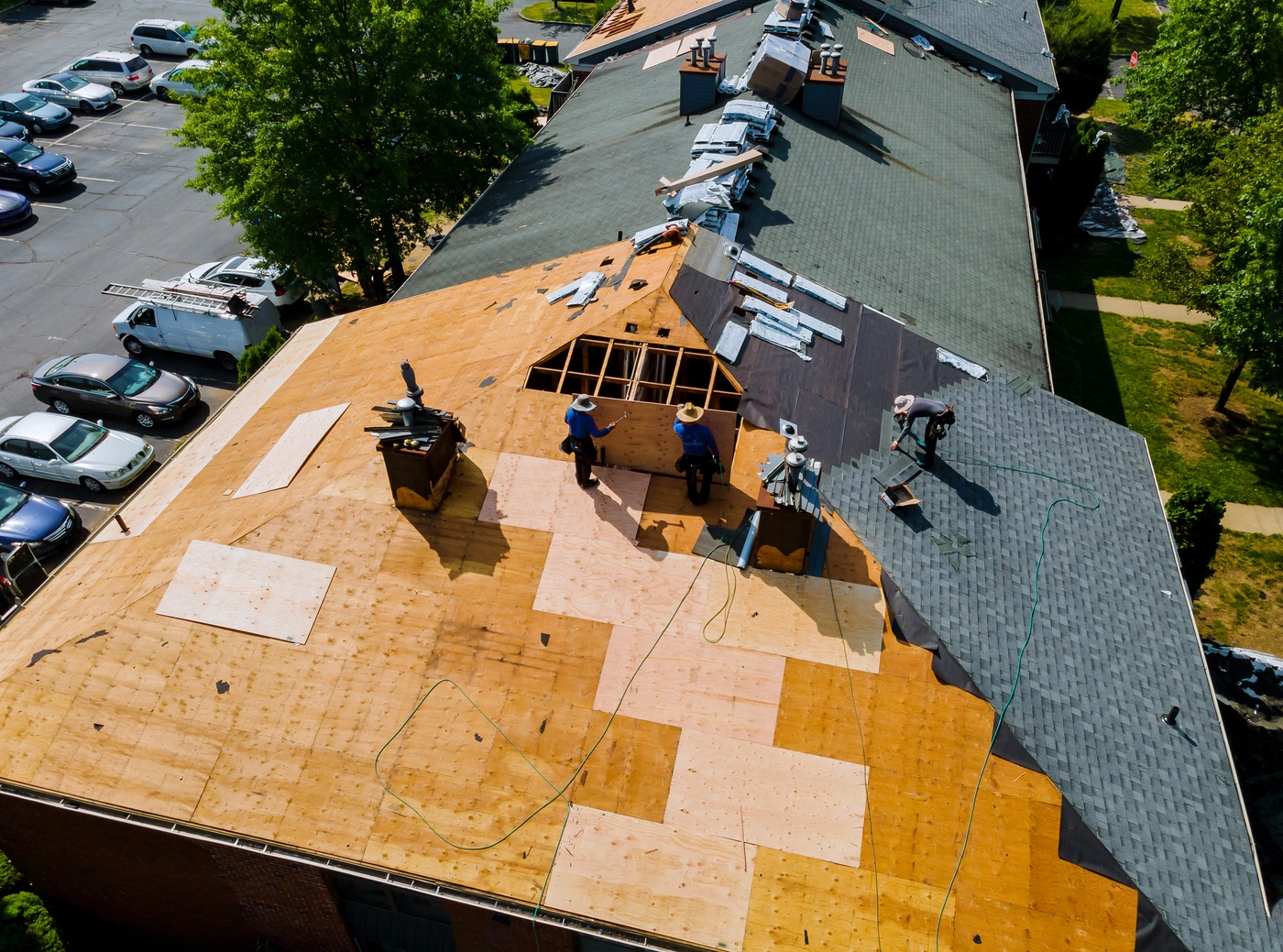
The decision to tackle shingle roof repair yourself or hire a professional depends on your skills, resources, and the extent of the damage. Most homeowners opt for professional repairs when the damage is extensive or safety is a concern. Here are some pros and cons of each approach:
DIY Shingle Roof Repair:
✅ Pros:
- Cost-effective for minor repairs.
- Immediate action can be taken if needed.
- DIY enthusiasts can take pride in their work.
❌ Cons:
- Limited to minor repairs; major issues require professional intervention.
- Risk of improper repair, leading to more extensive damage.
- No warranties or guarantees on the repair’s longevity.
Professional Shingle Roof Repair:
✅ Pros:
- Expert assessment and repairs for all levels of damage.
- Warranties and guarantees on workmanship.
- Time and energy savings for homeowners.
❌ Cons:
- Higher upfront cost compared to DIY.
- Need to find a reputable contractor.
- Scheduling and wait times for professional services.
The Cost of Shingle Roof Repair
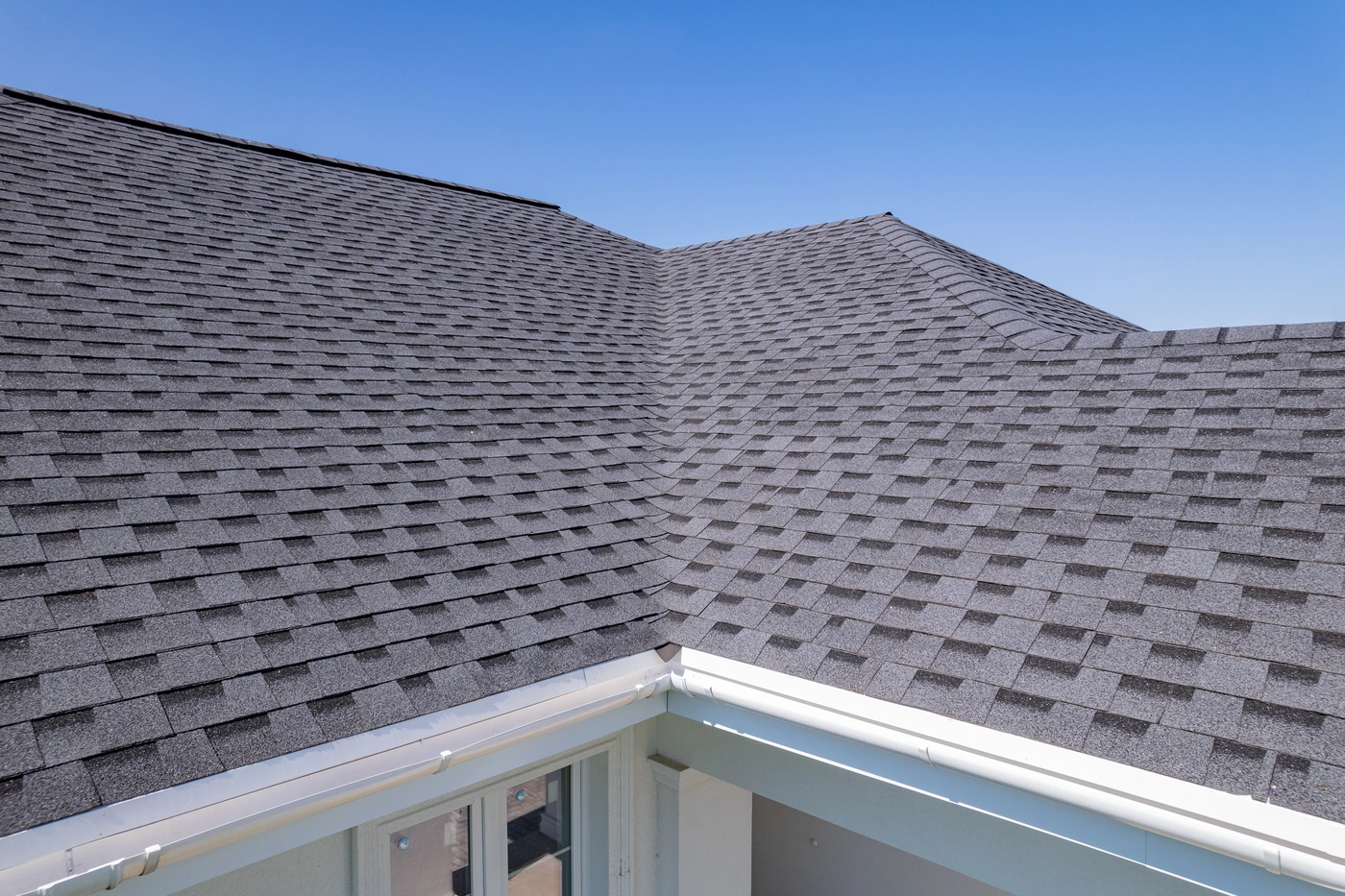
The cost of shingle roof repair can vary significantly based on factors such as the extent of the damage, the materials needed, and whether you choose DIY or professional repair. The following factors also influence repair costs: roof size, type of damage, the age of the roof, the presence of solar panels that may need removal and reinstallation, and whether you are dealing with specific issues like leak repair costs.
Minor repairs done yourself may only cost a few hundred dollars in materials, while professional repairs or replacements can range from $1,000 to $5,000 or more. It’s essential to obtain multiple quotes from reputable contractors to ensure a fair price. Homeowners should also request a free estimate from each contractor to better understand the total repair costs, including leak repair costs if applicable. Homeowners sometimes compare repair costs with metal roof installation expenses to evaluate whether long-term replacement is the better option.”
Shingle Roof Repair in Montana
When it comes to shingle roof repair, Montana homeowners face unique challenges. Our state’s weather—from heavy snow and ice to powerful winds and hail—puts immense stress on roofing systems. Understanding these local factors is crucial to making the right repairs to protect your home. For mountain towns like Kalispell, ice dam removal services are often essential to prevent water intrusion during the winter season.
The Impact of Heavy Snow and Ice Dams
In mountain towns like Bozeman, Big Sky, and Kalispell, heavy snow is a primary concern. The constant weight can stress your roof’s structure. This often leads to ice dams, which force water under your shingles, causing significant damage. Our repair services include inspecting for ice dam damage and providing solutions so your roof can handle the winter.
Protecting Your Roof from High Winds and Hail
Montana is known for its strong winds. These gusts can easily lift and tear shingles, leaving your roof vulnerable. In areas like Billings and Great Falls, hailstorms are frequent, bruising shingles and compromising their ability to shed water. When we perform a shingle roof repair, we also reinforce the area to withstand these extreme conditions, ensuring your roof is prepared for whatever the Montana sky throws its way. In case you already need a repair because of hail damage, let us know and we will make sure that it is promply solved. In areas like Lakeside, homeowners often need storm damage repairs after powerful hailstorms compromise their shingles.
How to Protect Your Shingles from Damage in the Future
Preventing damage to your asphalt shingle roof is as important as repairing it. Regular maintenance helps prevent leaks and extends the lifespan of all types of roofs. Here are some steps you can take to protect your shingles from future harm:
- Regular Inspections: Conduct visual inspections of your roof at least twice a year, especially after severe weather events.
- Keep Trees Trimmed: Trim overhanging branches to prevent them from falling onto your roof during storms.
- Proper Ventilation: Ensure your attic has proper ventilation to prevent heat buildup and the premature aging of shingles.
- Clean Gutters and Downspouts: Keep gutters and downspouts clear of debris to prevent water backup and ice dams.
- Professional Maintenance: Schedule regular roof maintenance with a professional to address minor issues before they become major problems.
- Roof Coatings: Consider applying reflective roof coatings to prolong the life of your shingles and reduce energy costs.
Let Us Care for Your Shingle Roof Repair

In conclusion, shingle roof repair is a crucial part of preserving your home’s value and structural integrity. Being proactive about identifying damaged shingles, understanding roof shingle repair cost, and scheduling regular inspections can make all the difference in preventing further damage and costly repairs.
Whether you’re tackling a minor shingle roof repair or facing more significant roof damage, knowing when to call a roofing contractor is key to ensuring the job is done right. By staying on top of repairs and maintenance, you can avoid major problems and keep your roof—and your home—protected for years to come.
Don’t wait until minor issues become major headaches; address repairs promptly to safeguard your investment and enjoy peace of mind.
Contact Montana Roofing Solutions to repair roof shingles on your home!

